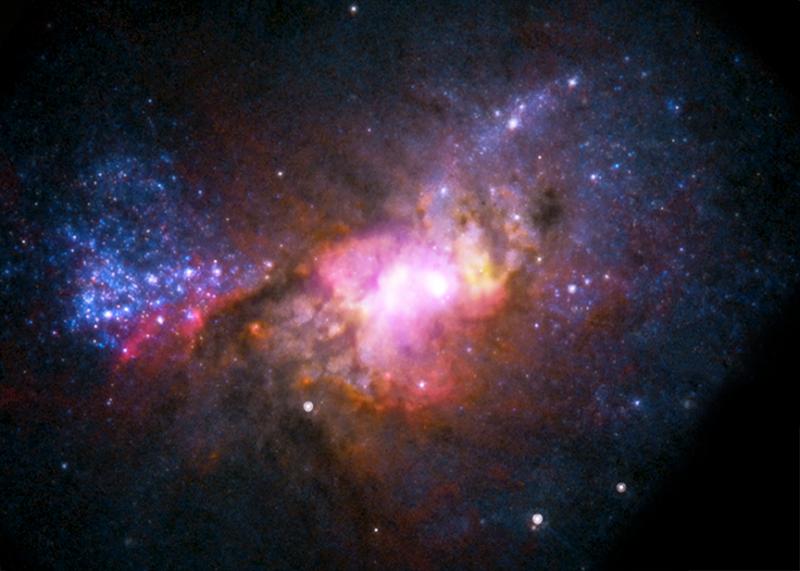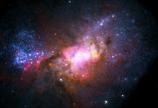Dark mysteries: UVic researchers help push the boundaries of galactic knowledge
- Valerie Shore

We all joke about black holes in our everyday lives when something disappears. And we know from watching Star Trek and sci-fi movies that black holes are massive cosmic phenomena not to be messed with. But what are they really? And what role do they play in the evolution of galaxies?
Two new studies involving University of Victoria researchers are providing some clues.
Black holes are extremely dense regions in space that have such a strong gravitational pull that even light can’t escape. They come in a variety of sizes, but perhaps the most intriguing are supermassive black holes, which lurk at the centre of galaxies and can be millions or even billions of times as massive as the sun.
From the collection of dust and gas supplied by its parent galaxy, a black hole can episodically consume new material and steadily grow in size. Astronomers think there’s a supermassive black hole in the centre of nearly every large galaxy, including our own Milky Way.
We know that supermassive black holes play an important role in the evolution of galaxies, but how did they come to be there?
In one recent study, UVic cosmologist Sara Ellison harnessed the power of the world’s largest galaxy database, which she and her team have been analyzing to study the properties of more than one million galaxies and their black holes. One feature they looked at is shape—how much of the galaxy is in a central “bulge” as apposed to a “disk.”
A galaxy bulge is a ball-shaped object at the centre of most galaxies that contains many billions of stars.
Black holes tend to trace the properties of the galaxy bulges in which they live, explains Ellison. But this recent study found a significant number of galaxies that have little or no bulge, yet have a sizeable black hole.
“It’s a puzzle, then, how these galaxies started to grow their black holes if they don’t yet have their bulge,” she says. “It’s possible that this discovery is giving us a peek at the stage when the black holes are just emerging.”
The galaxy-black hole relationship was explored from a different angle in another recent study, this time involving Asa Bluck, a postdoctoral research fellow working with Ellison.
Seeking to understand why some galaxies stop making new stars, Bluck and his team used sophisticated pattern recognition software to measure the properties of over 500,000 galaxies.
They found a distinct link between the size of a galaxy’s bulge and its colour. As a rule, red galaxies contain mostly older stars, while blue galaxies are made up of young, newly born stars. “We found many red disks, and even some blue spheroids, but all galaxies with more than a certain critical mass of bulge are red in colour, and have no new stars,” says Bluck.
Why would that be? This is where those lurking supermassive black holes enter the equation. A big bulge points to the presence of a big black hole, which as it forms, spews out vast amounts of energy that heats up and blows away the gases needed to make new, blue stars.
“Our new observation that bulge mass relates to colour most directly is strong indirect evidence that black holes are shaping the destiny of galaxies,” says Bluck.
To see the full papers visit:
Ellison: http://arxiv.org/pdf/1401.5483v1.pdf

